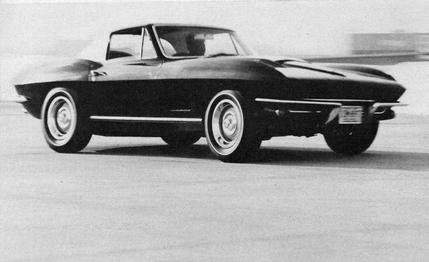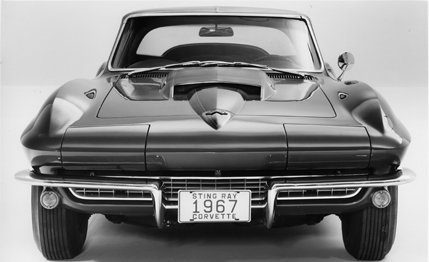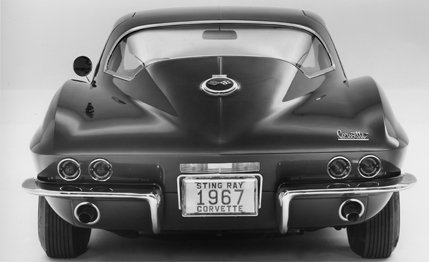
 Road Test
Road Test
The Corvette has come a long way since it was introduced in 1953. In the beginning, the Corvette was a cute little two-seater. It sure enough looked like a sports car, but underneath the radical fiberglass bodywork was a puny 235 cu. in., 150-horsepower "Blue Flame" six and a two-speed Powerglide transmission. Everybody laughed. Even Thunderbird owners knew they had something closer to a sports car.
Slowly, the Corvette got better. In 1955 came a V-8 and a 3-speed, close-ratio, all-synchro gearbox. The following year, Dr. Dick Thompson astounded the purists when his Corvette led the production car race at Torrey Pines — fending off the undefeated Mercedes-Benz 300 SLs and Jaguar XK-140MCs until the 'Vette's brakes faded him back to a second-place finish.
The Corvette was rolling in high gear by 1957, with the fuel-injected 283 V-8, a 4-speed gearbox and heavy-duty brakes. Winning production car races was easy, and Chevy unveiled a real, live sports/racing car at Sebring, the Corvette SS. The AMA anti-racing ban removed GM from racing shortly thereafter, and the pace of development slowed again, with the only memorable milepost being the 327 cu. in. V-8 in 1961.


Nineteen sixty-three was a banner year for Corvette. A whole new car, the Sting Ray, debuted — the first all-new Corvette in a decade. It shared with the rear-engined Corvair the distinction of being the only American car with four-wheel independent suspension, and it was well and truly a sports car. The emergence of the Sting Ray was underlined by the appearance of the Grand Sport, chronicled in our April issue, during GM's brief return to racing in 1963.
Nobody was laughing anymore. The Corvette was accepted by purist and hot rodder alike. The automotive magazines claimed they could boost circulation by 30,000 (about the number of Corvettes sold each year) merely by putting a Sting Ray on the cover. Even Ford was irked enough to back Carroll Shelby's Cobra in a last-ditch effort to wrest the world's attention away from the Corvette. The Corvette had arrived and everybody in the blue-eyed world knew it.
Many experimental features are first tried out on the low-volume Corvette, then applied to the regular passenger cars, like aluminum transmission cases and bell housings, 4-speed transmissions, rayon brake lines, and link-type independent rear suspension. Standard engines are modified for use in the Corvette, and the modifications often turn up later in regular production Chevies.


Nothing of earth-shattering importance has happened to the Sting Ray in the past four years. Four-wheel disc brakes — an American first — and the 396 cu. in. "porcupine" head engine appeared in 1965, followed by the 427 cu. in. V-8 in 1966. A year ago, it looked as if the Mako Shark show car might pre-figure the '67 Corvette, and there were dark rumors about a Chaparral-like rear-engined Corvette, but nothing materialized. Zora Arkus-Duntov, the man most responsible for the Corvette's success (nominally, he is head of the Corvette's engine and chassis group), and his cadre of engineers have concentrated on detail refinements, to the obvious satisfaction of not only the nearly 100,000 Corvette owners, but also to a sampling of Car and Driver's nearly 400,000 readers, who voted it the Best All-Around Car of 1967 — over very stiff competition.